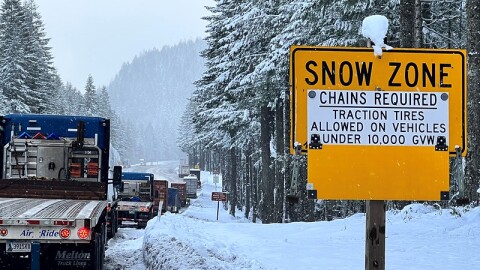-
The Oregon Department of Agriculture has settled a lawsuit with a Eugene-area business over a large pile of horse manure.
-
Heavy snow Tuesday through Thursday could lead to treacherous travel conditions in the Cascades and some areas of Eastern Oregon. Officials advise people to delay travel if possible.
-
With binoculars in hand, the groups traveled everywhere in Oregon including Pendleton, Baker City, and Joseph.
-
Over the past decade, invasive European chafer beetles have taken hold in Western Washington. Crows, racoons and other animals are tearing up lawns in search of the grubs.
-
Oregon conservation groups collect trees after Christmas each year to help salmon and steelhead.
-
Volunteers with Oregon State Parks will fan out along the coast from Dec. 27 to Dec. 31 to help people see gray whales swimming past Oregon.
-
Petition comes weeks after young entangled humpback whale found stranded near Yachats
-
Forecasters with the National Weather Service are closely monitoring the windstorm but say it’s still too early to predict how strong those winds will be on Wednesday.
-
The Central Oregon ski resort says fresh snow and a colder forecast mean it can open after a delayed season.
-
The sheer magnitude of a landslide that blocked a quarter-mile section of Oregon 229 north of Siletz has left state highway officials unsure when the debris will ever be cleared. ODOT officials said it may be months, years, or longer.
-
A winter storm could bring enough snow this weekend.
-
The first harvest of fresh Dungeness crab is in and folks are lining up to purchase the long-awaited crustaceans. Fisherman’s Market in Eugene was bustling with customers Thursday morning.
















